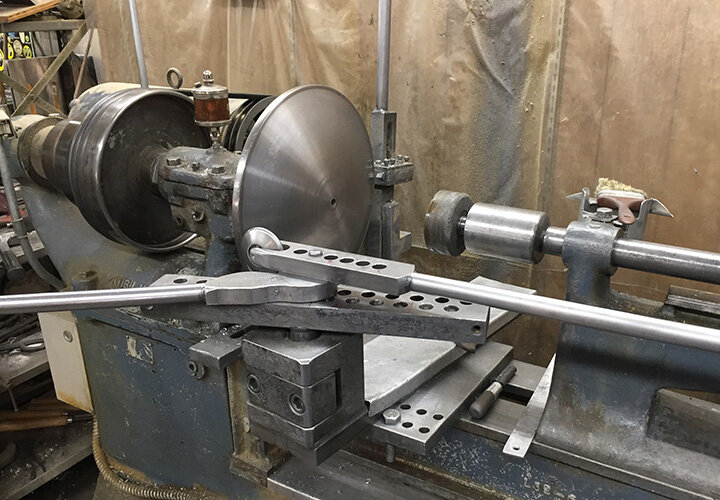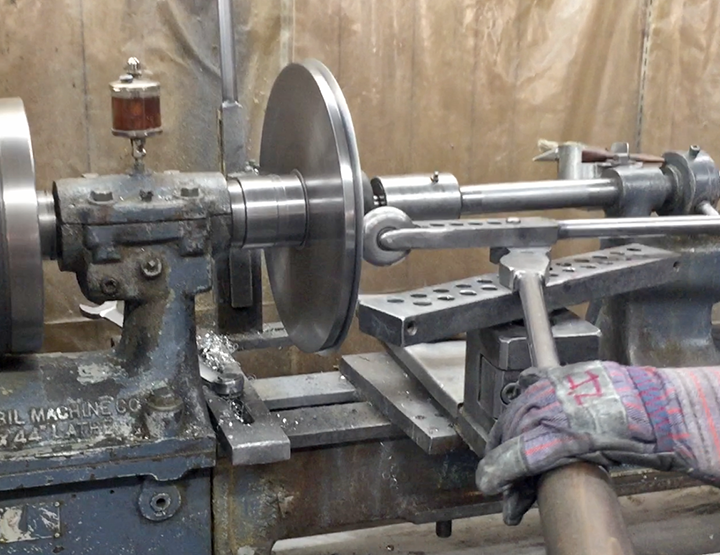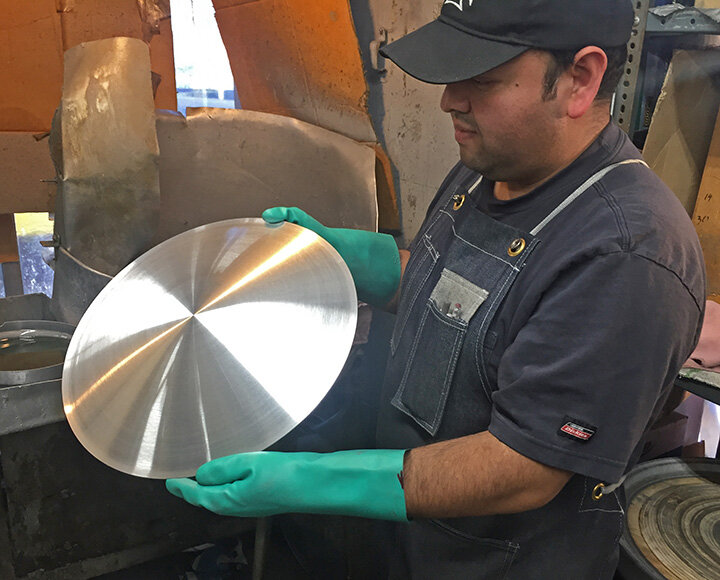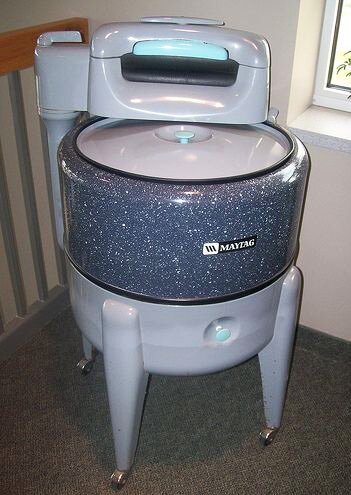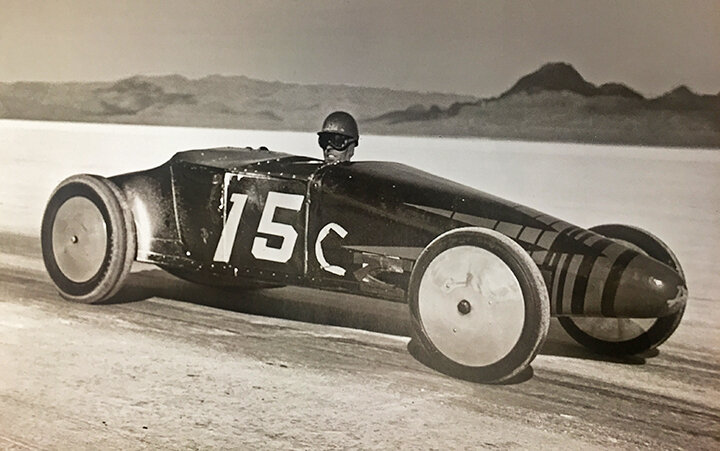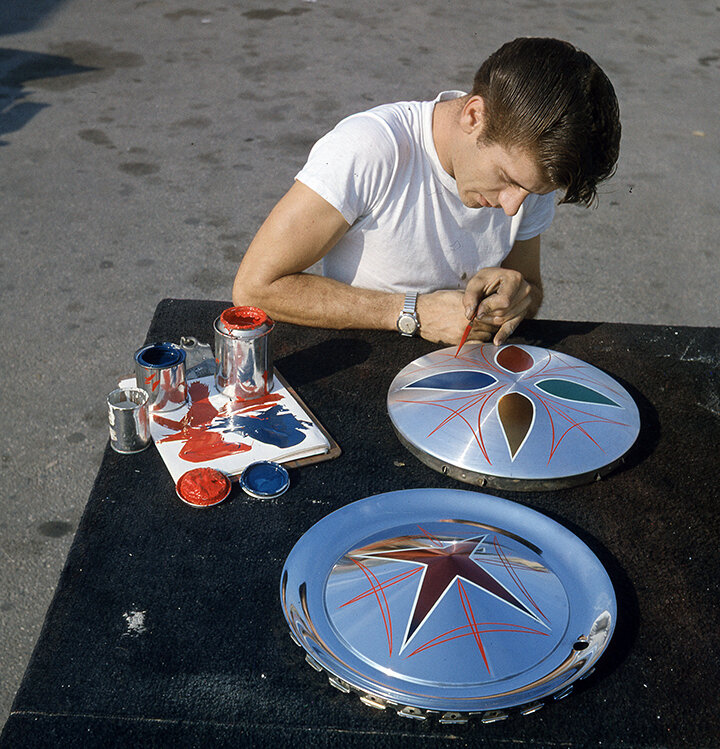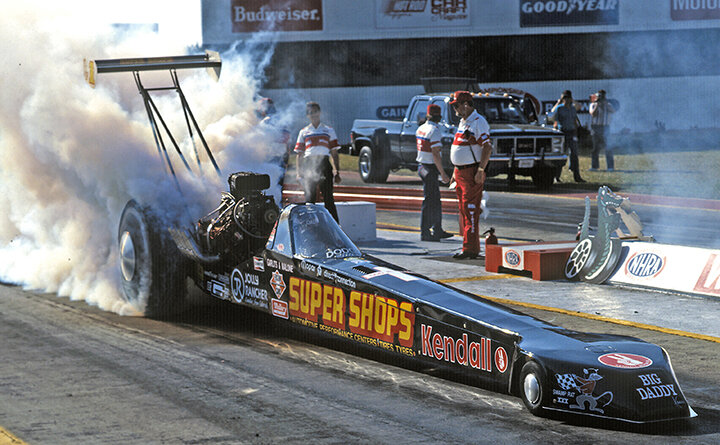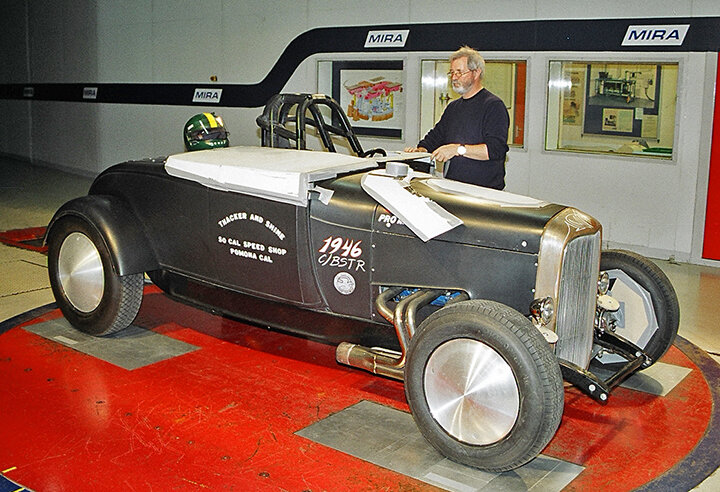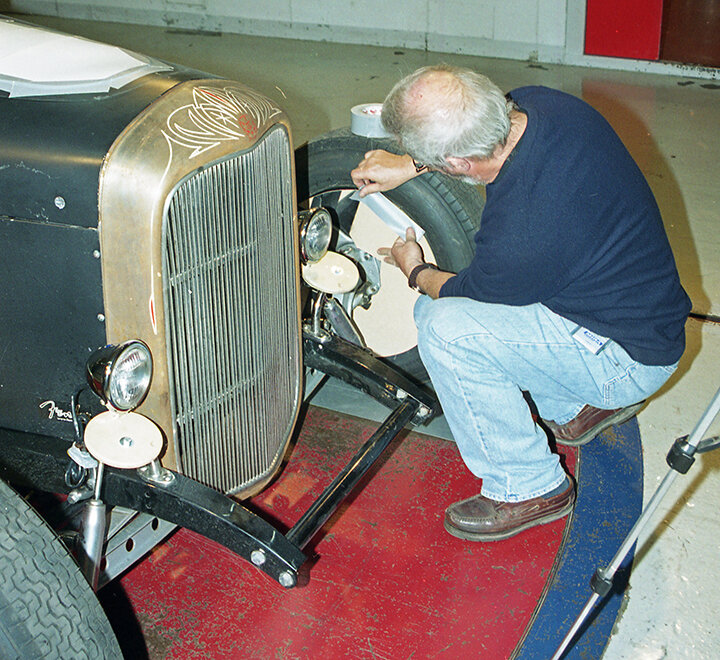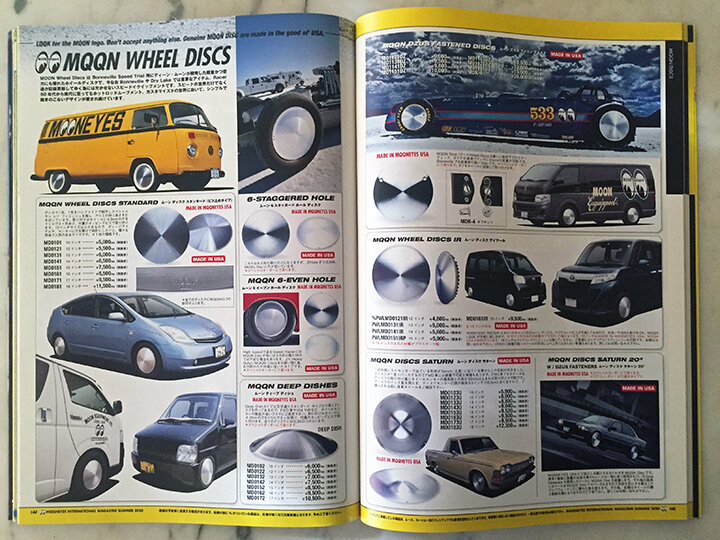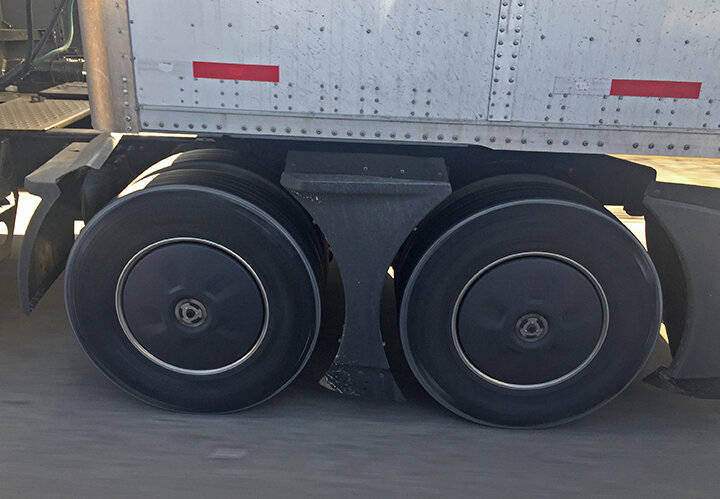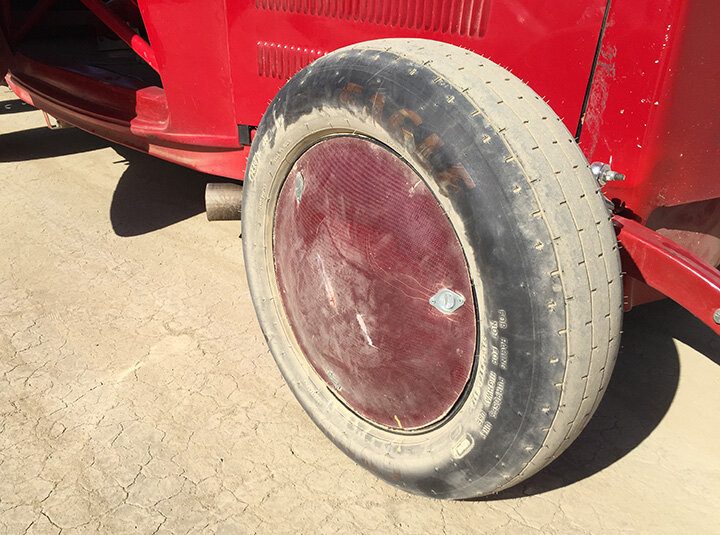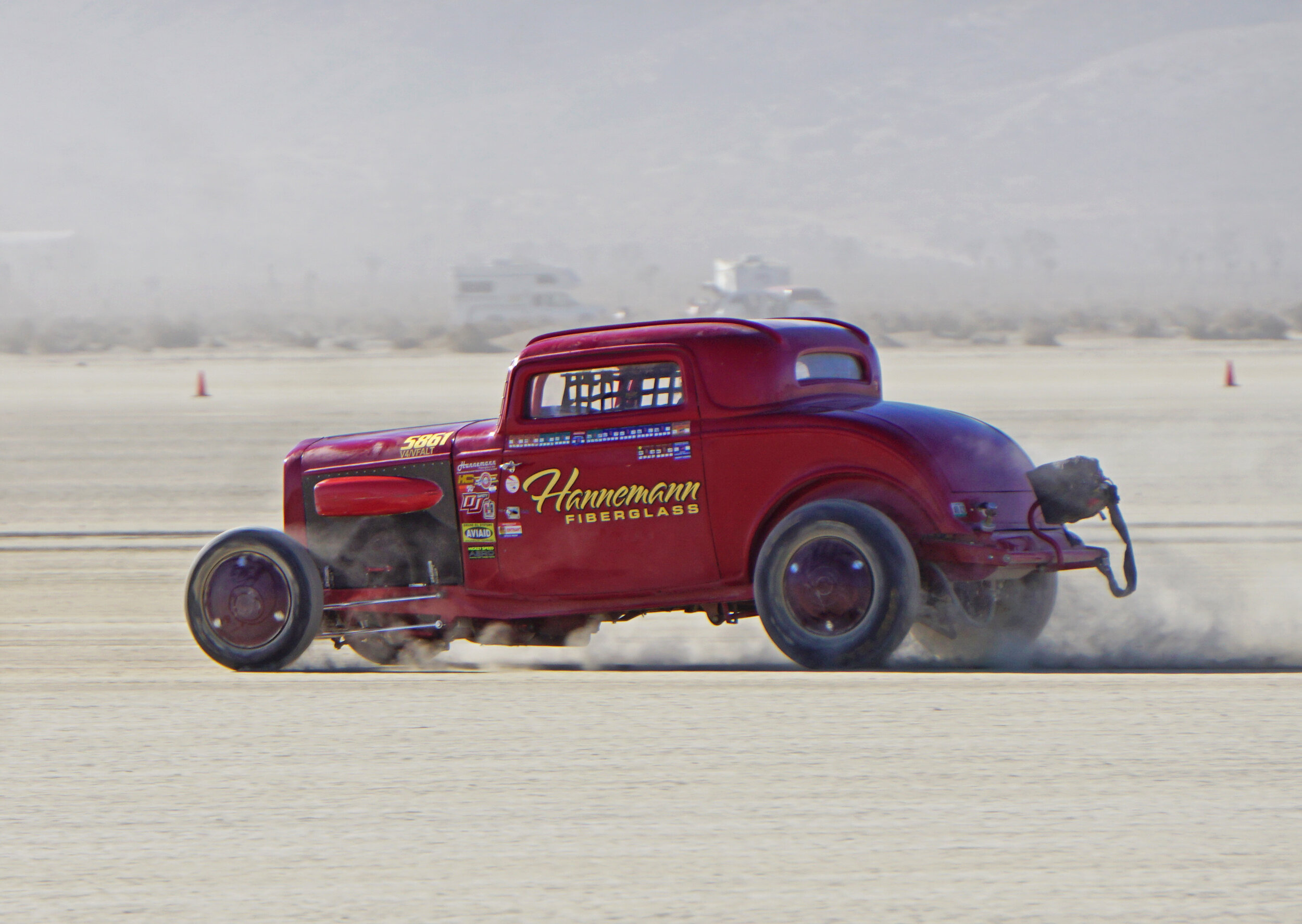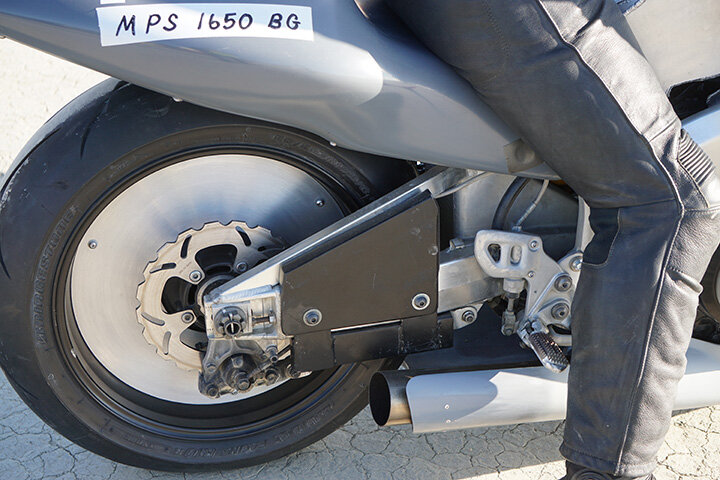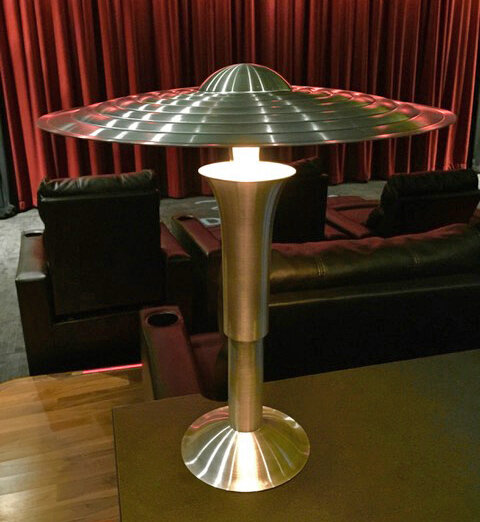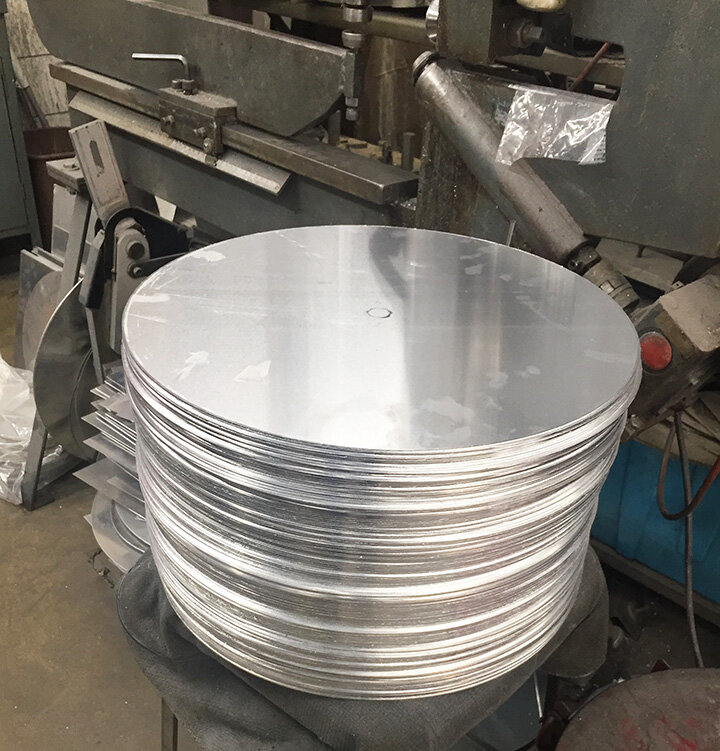Moon Discs: A Brief History of the World’s Fastest Accessory
December 2020 • By Tony Thacker, photos Bobby Green/Old Crow Speed Shop, Mooneyes, Penske Racing & Steve Reyes
Presented by HandHFlatheads.com, MicksPaint.com & USAutomotive.co.ukDry lakes racer Bob Rufi turned the lakes racing scene upon its head when in 1939 he appeared with a bomb-shaped bolide built from electrical conduit wrapped in aluminum. On May 19, 1940, crouched in the nose ahead of his Chevy 4, Bob hit 140 mph. More than clocks stopped when fellow racers realized what streamlining could do. Part of Bob’s secret of speed was the front and rear, inner and outer wheel covers that came from a World War I Curtiss Jenny airplane.
1925 Curtiss P1 Hawk was the first aircraft to carry the “P” for Pursuit, designation. Notice the inner and outer wheel discs.
America’s impending entry into World War I propelled Frank Curtiss into the aircraft business and he hired Benjamin Douglas Thomas from Sopwith in England to design the Curtiss Models J and N. Thomas brought with him the idea of wheel covers. Sopwith had been founded in 1912 and there were wheel covers on their planes almost from the beginning.
The earliest example of wheel discs I could find were on Louis Ross’ 1903 twin-engined Stanley ‘Woggle-Bug’ steam racer at Daytona Beach, Florida.
It’s not too far a leap from an airplane to an automobile and land speed racing and the first image I can find of a land speed racer using wheel covers is dated 1903. It was Louis Ross racing in the twin-engined Stanley ‘Woggle-Bug’ steam automobile at Daytona Beach, Florida.
The ‘Blitzen Benz’ circa 1910 with obvious wheel discs. Photo Daimler
The next reference I found related to the famed ‘Blitzen Benz’ that was shipped from Germany to the US in January 1910. On March 16-17, 1910, driver Barney Oldfield duly posted a new best of 131.4mph (211.4kph) at Daytona Beach. The one-way run was not recognized as a record.
On April 25, 1920, Tommy Milton covered the Daytona mile at 156.046 mph (251.131 km/h) in this twin-engine Duesenberg. However, the car caught fire and it became a one-way, unrecognized record.
Ten years on, Tommy Milton’s twin-engine Duesenberg set seven new speed records including a fastest run of 156.046 mph (251.132 kph) on April 25, 1920. Again, it was only one-way and would not be internationally recognized. According to contemporary reports, ‘the Duesey had fabric wheel covers that Milton added to improve the vehicle’s aerodynamics and increase its speed.’
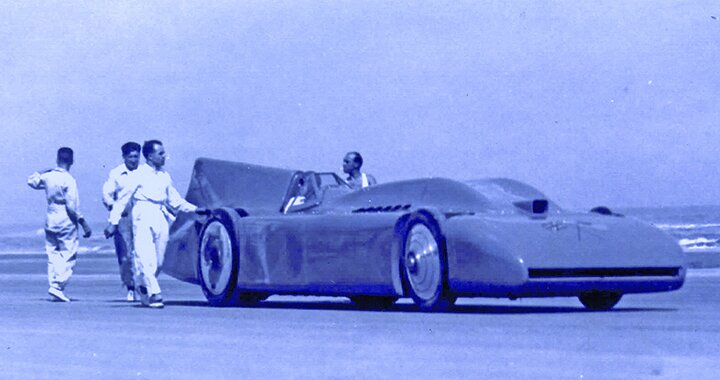
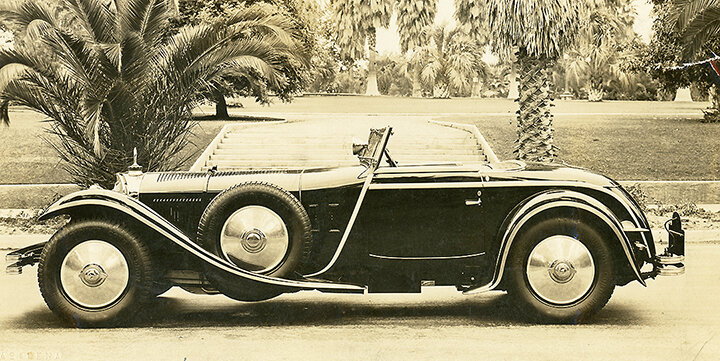
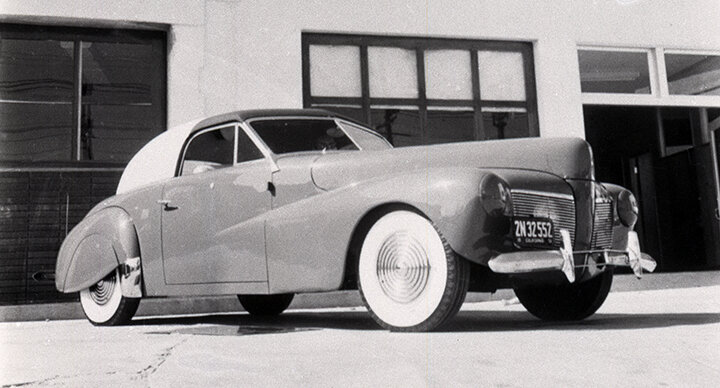
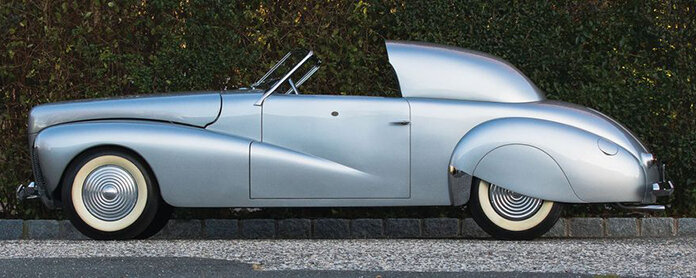
From that point on, wheel covers of various shapes and sizes appeared on many lsr cars including those of the legendary Sir Malcolm Campbell who’s ‘Bluebird’ sported some nifty ribbed covers. Indeed, by the early-30s prestigious road cars such as Cadillac and Rolls Royce were using covers to embellish their wheels.
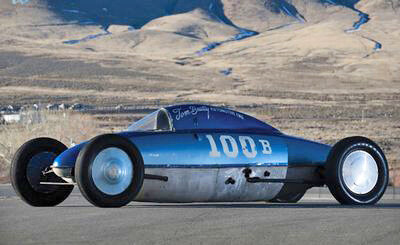
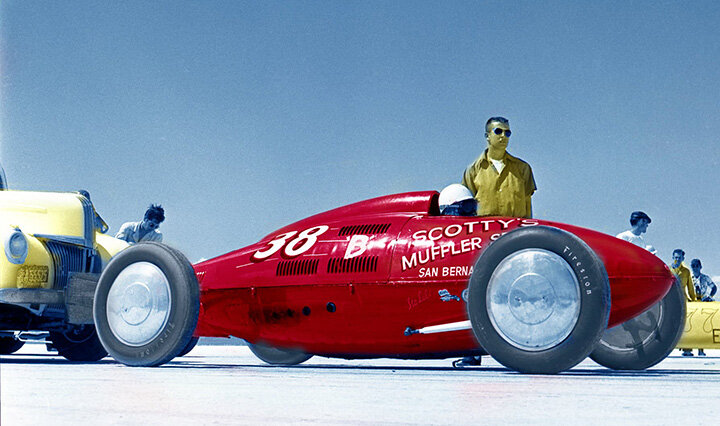
As we have seen, just before America entered WWII, Bob Rufi put wheel covers back on the land speed map with his little ’liner that got sold to Charles Beck. Beck ran it in ’42 with a Winfield Model B but it ‘only’ ran 131.96mph. He kept the wheel discs, however, for the most part lakes racers did not cotton to discs and we don’t see them again until the late-30s when Stu Hilborn fitted some to his streamliner—the first hot rod to go 150mph. According to Bobby Green of Old Crow Speed Shop, Hilborn and some of the other racers fashioned aluminum wheel discs from washing tub lids. I couldn’t find documented proff but it’s highly likely as the lids look like some early wheel discs.
Legend has it, Dean Moon saw these discs on Ak Miller’s Modified ’27 Roadster that ran at Bonneville in 1951. Apparently, he borrowed the tooling to make his own. Moon discs became de rigueur for land speed cars.
Eventually, in the search for speed other racers tried wheel discs including Al Brooks, Ak Miller and Don Waite but not in any great numbers. They were just not catching on despite the obvious aerodynamic benefits and the fact that in land speed racing weight is usually a benefit rather than a detriment.
Alex Xydias with his tank restored for Bruce Meyer. It had inner and outer flat wheel discs front and rear.
That said, in 1952, Alex Xydias, founder of the So-Cal Speed Shop in 1946, fitted some flat discs to the front and rear of his belly tank lakester. He wasn’t the only one to try this; Mickey Thompson had some flat discs on his ’52 Bonneville Bantam coupe and a couple years later the Chrisman Coupe and Roadster both sported flat discs.
Suddenly, it appeared that everybody racing at the lakes had to have a set of inner and outer discs. You have to remember, at that time, there were no aftermarket mag wheels—hadn’t been invented yet. The only wheels available were magnesium Indy-type racing wheels introduced by Ted Halibrand in 1946 —maybe too expensive for your average drag racer and they had funky pin-drive thing.
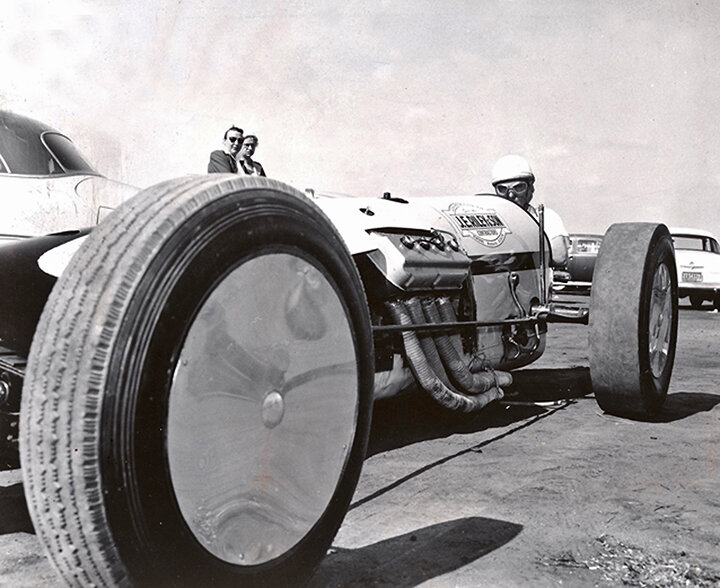
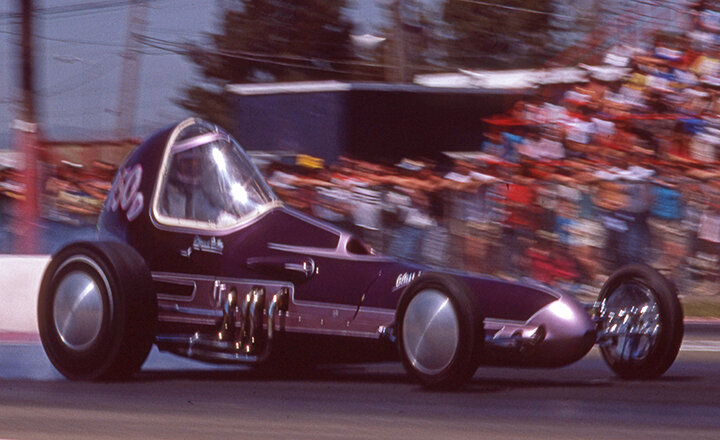
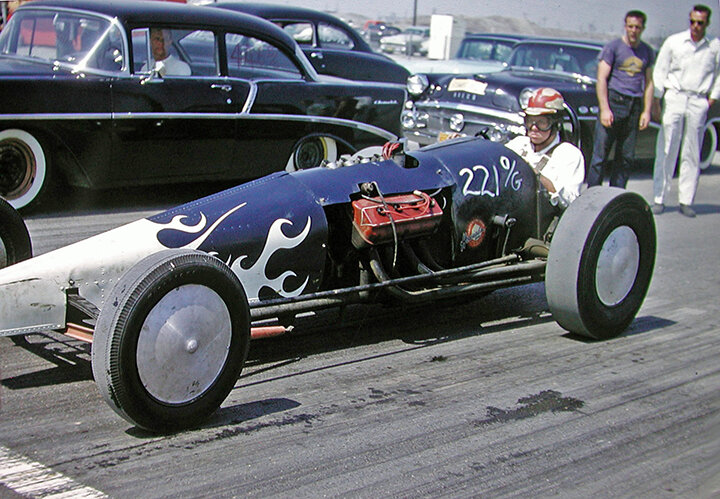
Early drag cars such as the J.E. Riley and Sons slingshot driven by Calvin Rice at the ’55 Nationals had flat discs on the front wheels but nicely dished aluminum discs on the rears. However, discs for drag cars were perhaps a detriment as they added weight, albeit minimal, and the aero assistance might have been negligible.
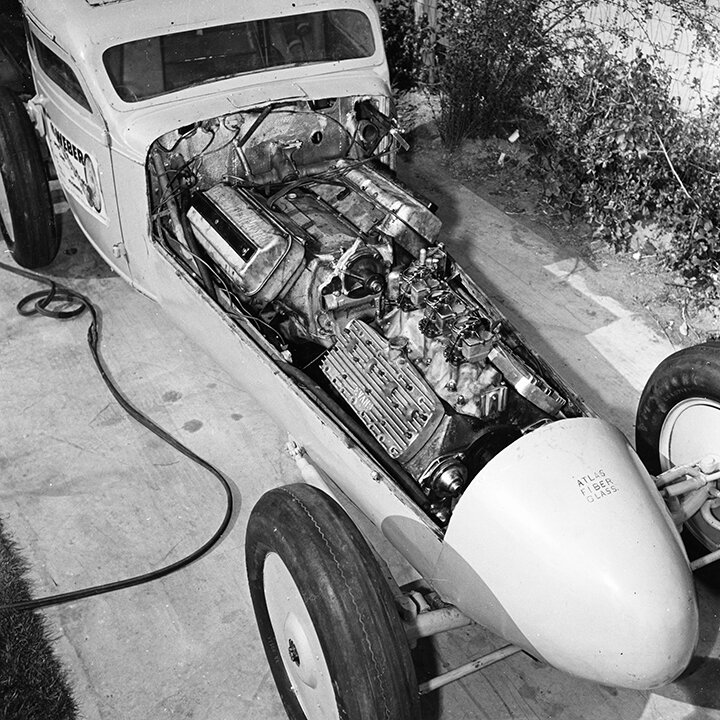
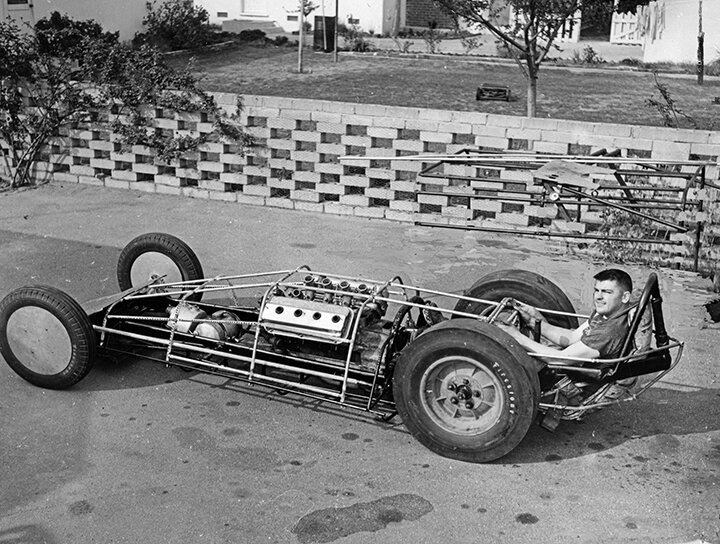
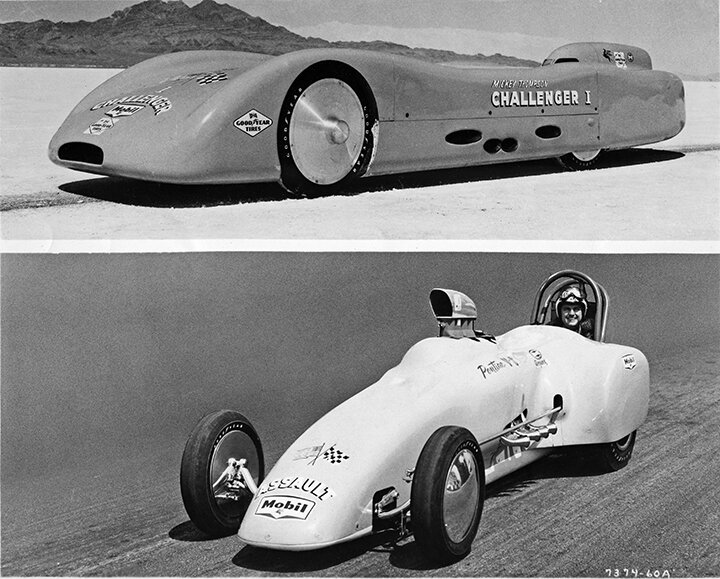
Many of Mickey Thompson’s racecars from his twin-engine Bantam to the 1959 Challenger featured discs of one shape or another.
Until 1956, and the invention by Romeo Palamides and Jim Ellison of the first bolt-on mag wheels for drag cars, people had little choice in wheels and so when Dean Moon introduced his Moon discs they were an instant hit and we soon fitted to lsr cars, drag cars and every type of street car. They were an easy dress-up accessory.
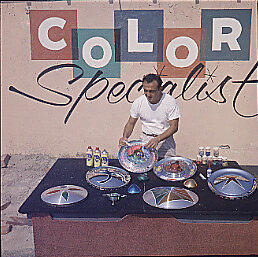
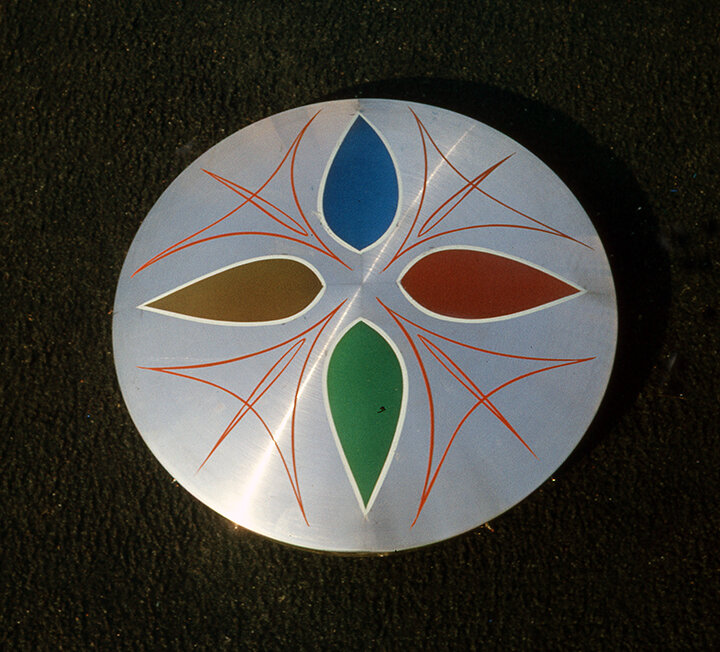
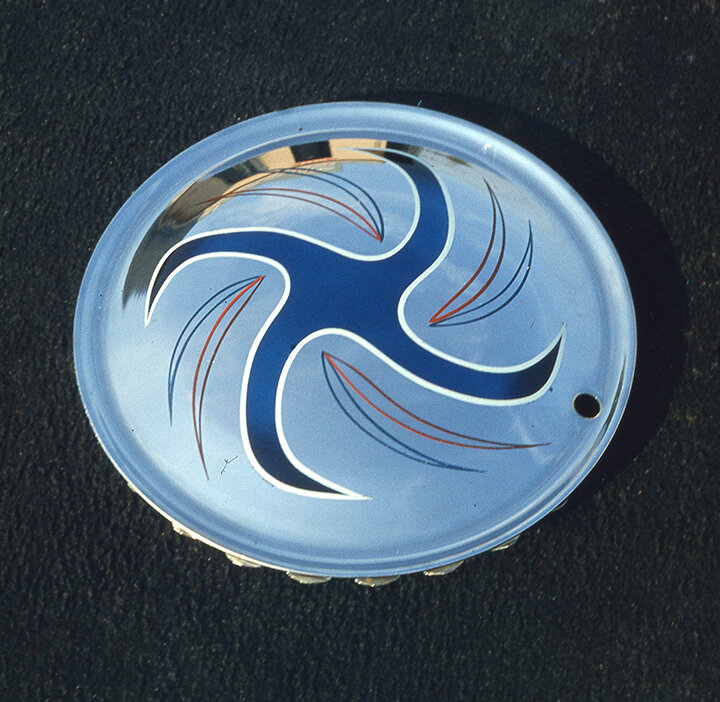
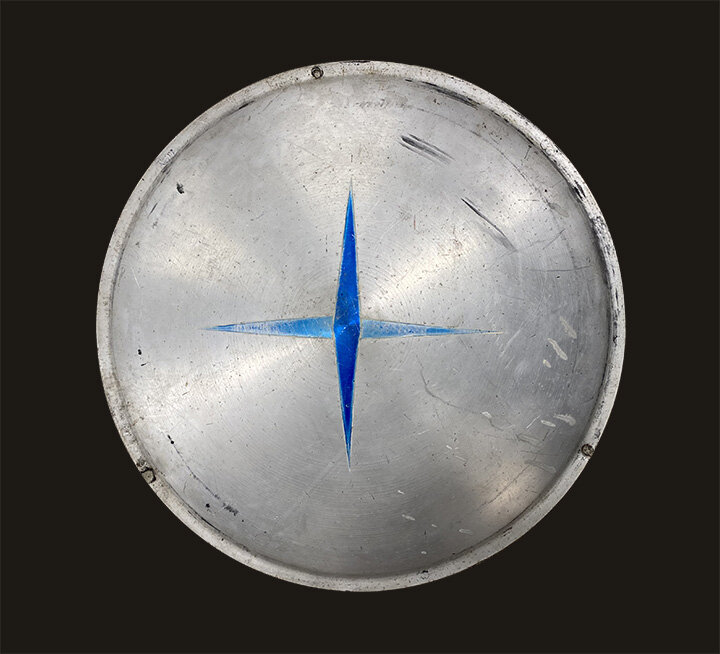
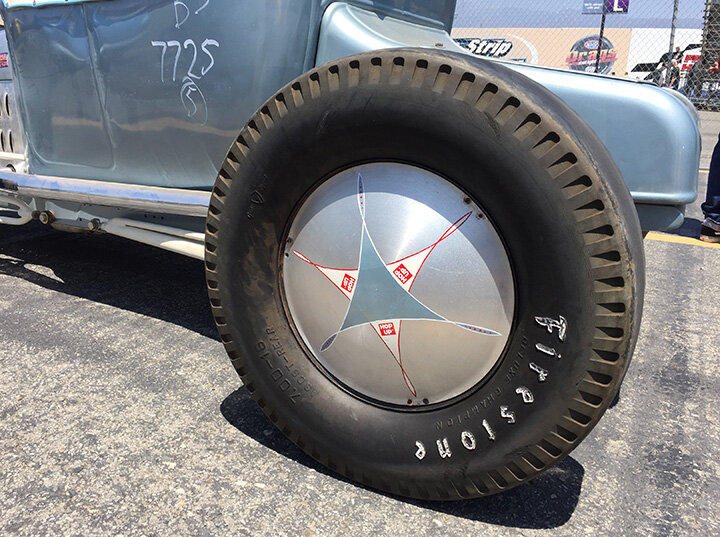
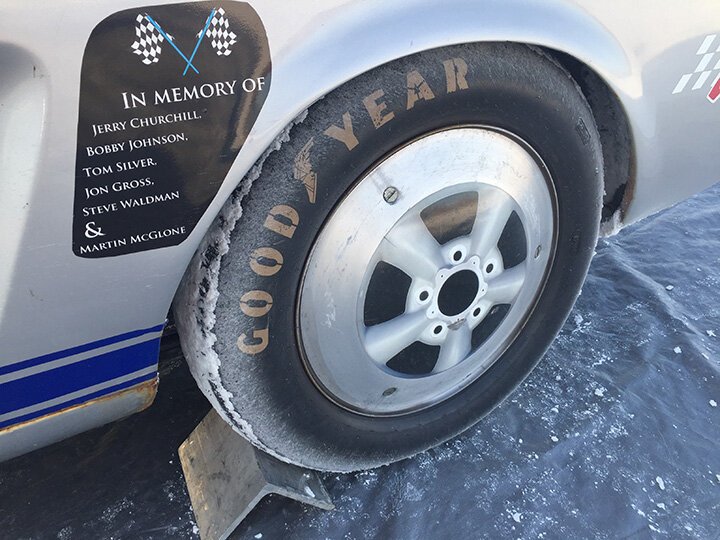
Of course, once Palamides’ American Racing wheels became available in aluminum in the early-60s, interest in Moon discs began to wane except for lsr cars where they remain almost de rigueur. However, in June 1959, ‘King of the Kustomizers’ George Barris got a cover story in Rod & Custom magazine. Titled ‘Kandy Apply Kap Low Cost Color Customizing,’ it featured Dean Jeffries decorating discs with candy paint and pin stripes. It doesn’t appear to be a trend that caught on as by then, American Racing wheels were on a roll.
Drag racers rediscovered wheel discs in the mid-60s—they helped trip the lights. This is Roger Harrington at Lodi in 1966. Photo Steve Reyes
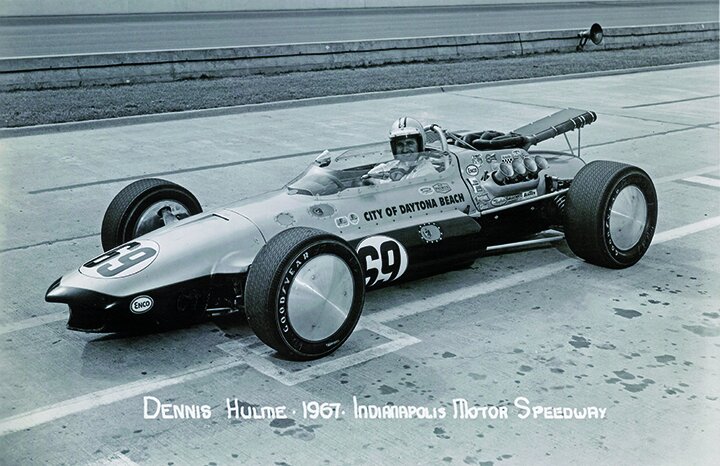
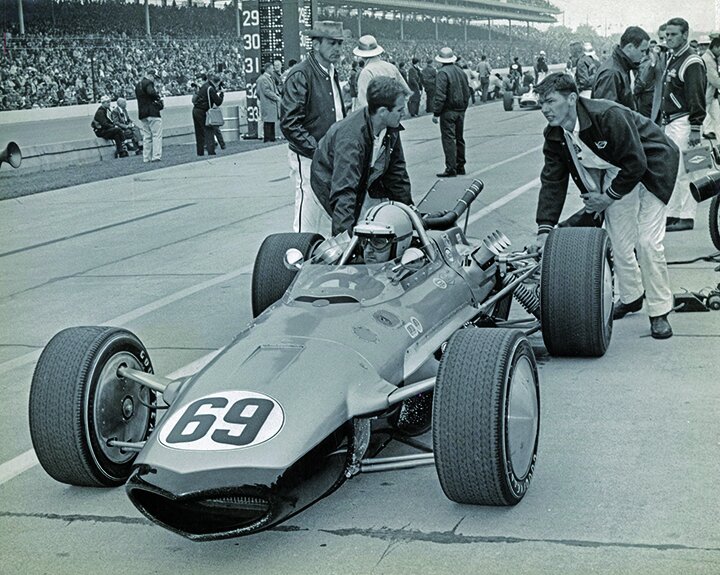
New Zealander Denny ‘The bear’ Hulme qaulified at 163.376mph and placed 4th in the ’67 Indy 500 in this Brabham. Photos Mooneyes
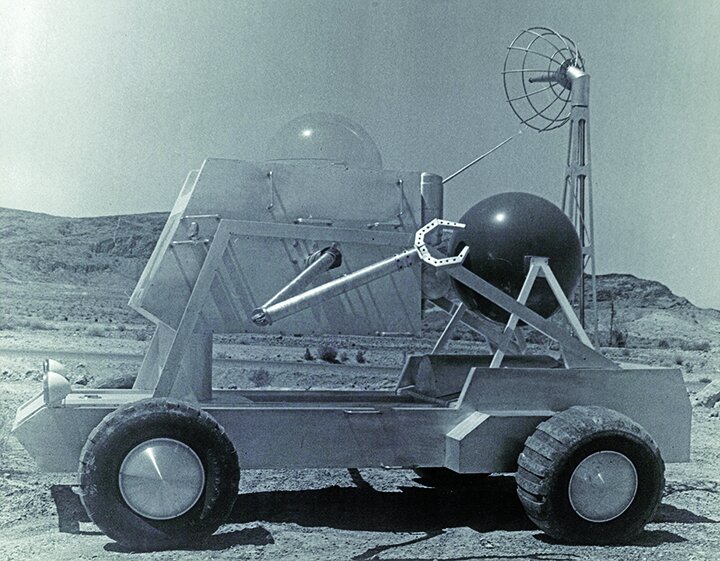
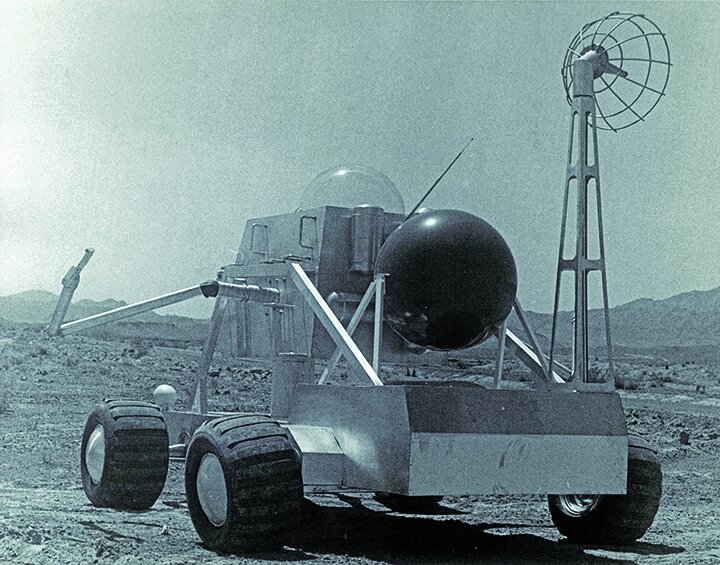
The Moon Buggy was built by the legendary Dean Jeffries for the James Bond movie Diamonds are Forever. The Buggy was eventually restored and displayed at Planet Hollywood Las Vegas casino. Photos Mooneyes
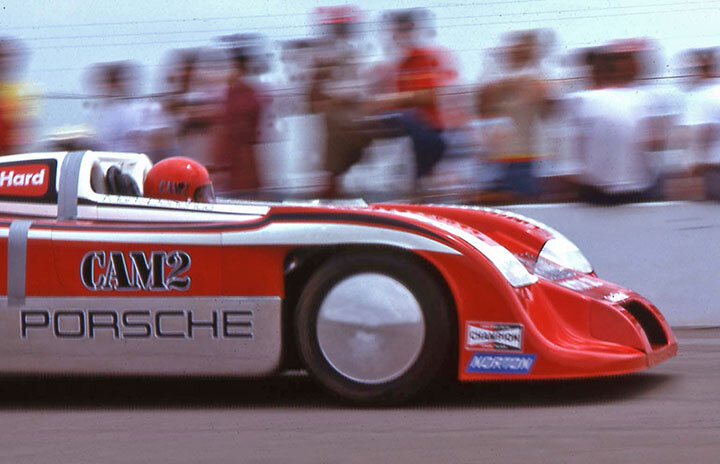
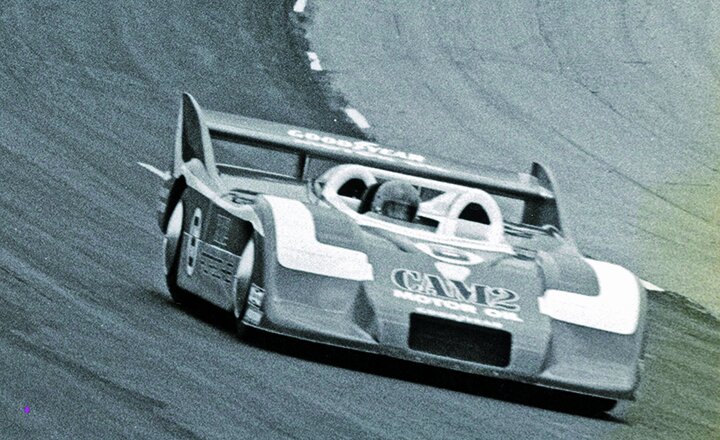
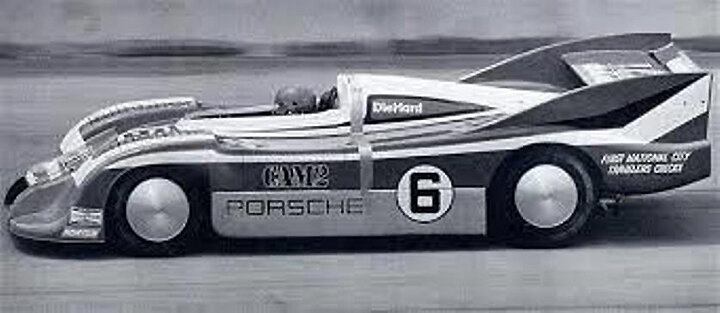
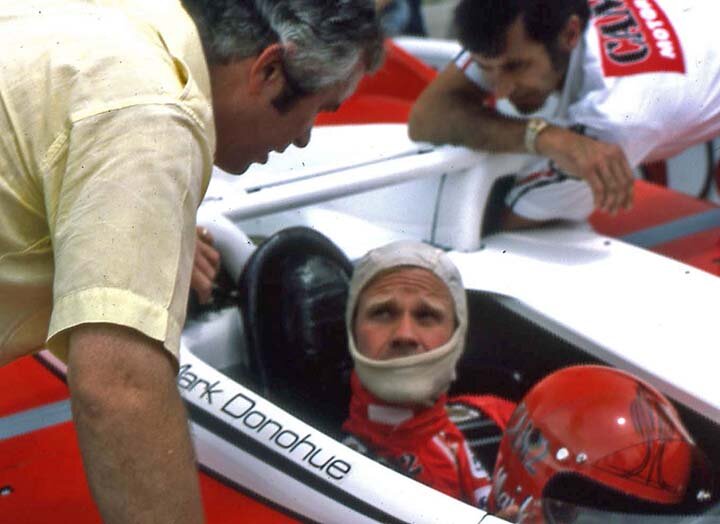
In 1975, Mark Donohue set the world closed course speed record at 221.160mph at Talladega in Penske’s CAM2 Porsche 917/30. This heavily modified open-top version of the 917 that gave Porsche its first Le Mans win, sported a 5.4L twin-turbo flat-12. Photos Mooneyes & Penske Racing
Don Garlits tried Moon discs on Swamp Rat 30 and 31 and ran a PB of 5.46/263.92mph. When I spoke to him he said, “I had no way of measuring the performance increase, but I’m smart enough to know that the big open wheel would create drag at 275mph. Every little helps.” Tom West photo courtesy Lou Hart collection
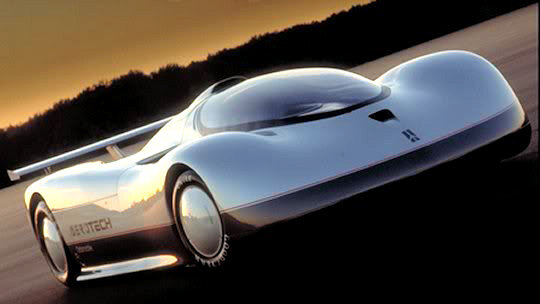
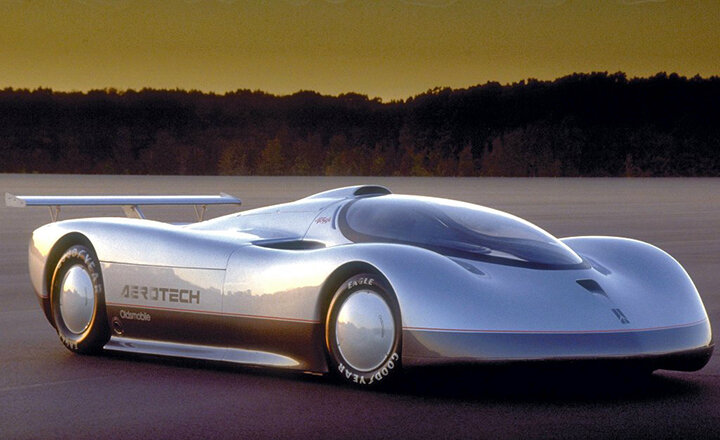
In 1987, AJ Foyt set the world’s closed course speed record at an insane 257.123mph in one of two Oldsmobile Aerotechs at Ford Stockton, TX. He ran the flying mile at 267.399mph. The Aerotechs were powered by turbocharged, 16-valve, 2.0L , dohc, Quad Four engines producing more than 1,000hp—quite an achievement in 1987.
In 2004, while campaigning my own Bonneville Roadster with Jimmy Shine, we were in search of more speed and my good friend Peter Stevens, designer of the McLaren F1, made some suggestions regarding the aerodynamics of the brick-like early-Ford Roadster. We hatched a plan to take the car to England and put it in Motor Industry Research Association wind tunnel to see if we could aero-up some ‘free’ horsepower.
McLaren F1 designer Peter Stevens performing origami on my roadster in the MIRA wind tunnel. The inner and outer wheel discs were worth 5hp each.
As it turned out, the Moon discs were worth a good 5hp and the flat, inner discs were worth another 5hp. So, without the aid of a wind tunnel all those years hence racers had known instinctively that Moon discs made a positive difference.
Seventy years on, they are still made for numerous applications by Mooneyes.com
